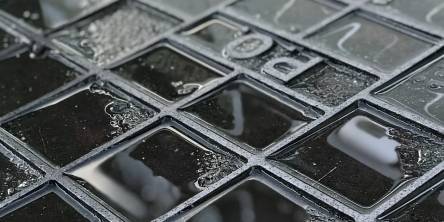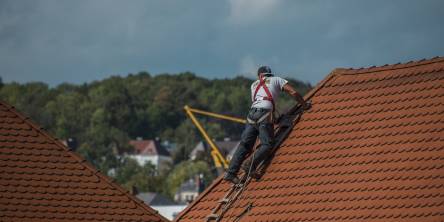Fitting Hardwood Flooring on Stairs

To be honest, installing a hardwood flooring might sound really difficult task, but in fact when it's on stairs isn’t that hard. Still, this is not a task that can be performed blindly, without any previous experience and proper preparation. Before beginning such a task, you must determine the amount of time, money and patience you are willing to invest in the project. It would be pointless to attempt it if you feel you won’t be able complete it, doesn’t it?
Let’s take a step by step look and see the process in depth. This article is dedicated to those who had no previous experience in such matters and it will cover the very basics from the start. Keep in mind, that this is not a DIY guide, but simply a bit of general information you may find useful.
The Parts of the Staircase
Stair thread - It is the horizontal part of the stairs upon which people actually step.
Stair riser - The vertical section between each thread.
Stair nosing - Edging part protruding above the riser. Can be part of the thread or be fixed on top of it.
Stair stringer(skirting) - The frame upon which rest the thread and the risers. Main structural support of the stairways.
Hardwood on Stairs
After clearing the basic concepts, let’s take a look at what does the process actually involves. In order to install a new hardwood flooring on your stairs, you must first cut the old nosing. This way the threads and the risers will form a perfect 90-degree angle and allow the hardwood to be placed properly.
Now it’s time for decisions. You can cover your stairs with either solid threads or strips and planks. The majority of people seem to prefer the solid alternative but satisfying results can be achieved either way.

Keep in mind that the prefinished strip method will probably be a bit more expensive since you have to include a stair nosing in addition to the plank. Also, there is a limited choice of nosings, so always consult your fitter before buying new flooring. My personal recommendation is to go for solid 180+ mm thread which comes as a single piece and there will be no need to install a nosing separately.
You Have Plenty Of Choice
There are no limitations when it comes to wood species. You can use all types of hardwood but naturally, some will simply offer better qualities. You can also choose between solid and engineered hardwood. Engineered boards will be more resistant to moisture and temperature changes but cannot be refinished as often and you can expect them to have a shorter lifespan.
Solid wood also isn’t without disadvantages of its own. It will be more likely to crack or warp compared to the engineered alternative. On the other hand, stairs are one of those parts of the house which will frequently experience traffic. The possibility to sand and refinish relatively often is a great benefit, that should not be underestimated. However, solid wood is more expensive in general and a bit more complicated to install. Because of this, you can expect that it will cost you slightly more.
In the end, hardwood flooring for stairs (or almost anywhere in the house) is a great idea. Some people prefer to use carpets on their staircases but those are harder to clean and maintain while being much less durable. If you are looking for long lasting investment, definitely your best option is the real wood. For the DIY fans, I will recommend this video, where every step from the process is explained, so it will make the whole process easier.
More detailed information on this topic (closer to DIY guide) you will be able to find here.
Similar Articles
Learn how a tidy home boosts mental health, reduces stress, improves productivity, and enhances well-being with simple, practical cleaning tips.
Have you ever harboured dreams of constructing your dream home filled with bespoke designs, carefully selected fittings and high-quality finishes? Have you ever fretted over the durability, aesthetics, and overall quality of your construction project? Are you constantly in search for the perfect balance between beauty and strength?
Cockroaches are one of the most common pests found in homes and businesses, and they are known for their resilience and ability to thrive in even the most unsanitary conditions. These pests can quickly infest kitchens, bathrooms, and other areas, spreading bacteria, allergens, and other harmful pathogens.
A well-maintained yard drainage system is key to preserving the beauty and health of any property. Poor drainage can lead to standing water, soil erosion, and even foundational damage to structures over time.
Keep your seaside home in top shape with these 4 expert tips! Learn about weatherproof materials, smart maintenance, and managing coastal challenges effectively.
Explore the future of roofing! Discover energy-efficient materials, smart systems, and sustainable designs reshaping modern home construction trends.
HVAC stands for heating, ventilation, and air conditioning. These all-in-one systems keep your home comfortable and improve air quality throughout a building. Often used in commercial buildings, HVAC units are increasingly used in residential buildings.
Safeguard your home after storms with timely roof repairs. Detect damage early, choose durable materials, and rely on a pro for lasting protection and peace of mind.
Learn how to balance a clean home and family life with these 6 practical tips to manage clutter, involve kids in chores, and set realistic expectations.









